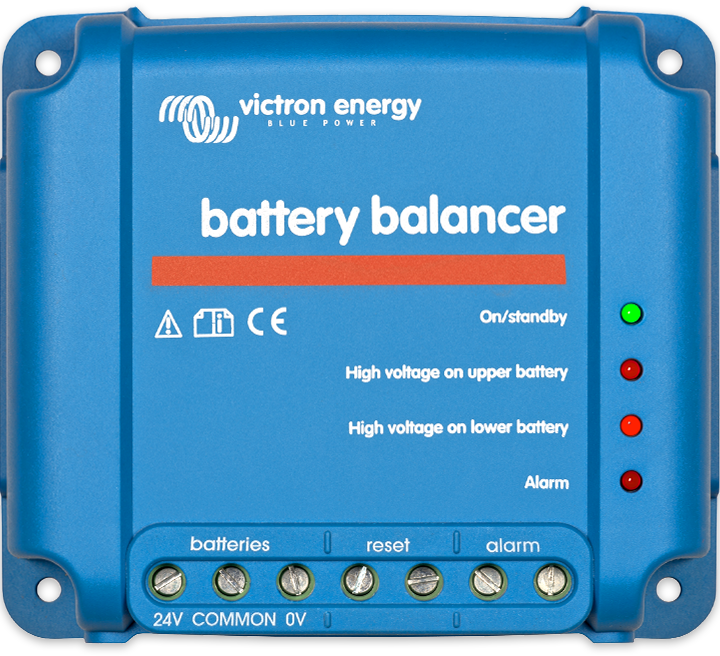Quattrohead
Solar Wizard
Balancing only happens during charging not discharging so that is not a consideration. As others have said single battery bank controlled by single BMS charged by a single charger. K i s s
I checked it but they have some Master/Slave BMS comunicate with each other by means of serial connection like CAN bus or RS485 and wifi only used for comunication between monitoring center and BMS! I'm looking for a Master/ Slave BMS that their "comunications between individual bms " will be based on wireless like Bluetooth or wifi!REC BMS
can you make a wire harness for the balance wires, and use JTS connectors between the separate batteries, one BMS ?I checked it but they have some Master/Slave BMS comunicate with each other by means of serial connection like CAN bus or RS485 and wifi only used for comunication between monitoring center and BMS! I'm looking for a Master/ Slave BMS that their "comunications between individual bms " will be based on wireless like Bluetooth or wifi!
can you make a wire harness for the balance wires, and use JTS connectors between the separate batteries, one BMS ?
When you connect batteries in series an individual cells between those batteries in parallel, you have a dead short. Fortunately with 22awg balance wires, it would be short lived and probably not a "shorts filling" experience.but to be more detailed it is 3x4S packs in series

adjust balancing in lower voltage around 3.3V/cell instead of previous 3.48 V/ceIl
we think that good cells grade shall not suffer from such unbalancing issues just after 150 cycles even if no balancing enabled
We're experienced that the issue isn't related to match capacity of the cells instead it is related to voltage drift of the cells and different self discharge during long time ! we couldn't check dynamic internal resistance measuring but we measured at first cells IR and all of them somehow are similar and just had 0.01 mili ohm difference! anyhow if Teala and others use active balancer it shows that this is a real problem of such technology although we had some other cells with longer term experience about 5 years and still have good balance without problem of balancing and their bms had not even have passive balancer!Won't help at all. You're well in the flat part of the LFP charge/discharge curve.
Did you specify that these cells have to be capacity and IR matched over the entire charge/discharge cycle?
By the way, cars use balancers as well - there is a reason Tesla for example tells you to charge their LFP models to 100%: it's the only state of charge where they can perform the balancing.
We're experienced that the issue isn't related to match capacity of the cells instead it is related to voltage drift of the cells and different self discharge during long time ! we couldn't check dynamic internal resistance measuring but we measured at first cells IR and all of them somehow are similar and just had 0.01 mili ohm difference! anyhow if Teala and others use active balancer it shows that this is a real problem of such technology although we had some other cells with longer term experience about 5 years and still have good balance without problem of balancing and their bms had not even have passive balancer!
How would the wireless BMS be able to balance the cells across battery packs? Passively dissipate the energy of the over voltage packs?To overcome the BMS issue, the OP would need a sphistacted system with wireless comms between the three cells, on master BMS and two slave BMS to follow instructions. Pretty tough to see how this would be cost effective.
It is about resistance of the circuits between the 12V packs causing imbalance with the packs in series. This is why a 36V pack is built with one BMS, all busbars between cells.We're experienced that the issue isn't related to match capacity of the cells instead it is related to voltage drift of the cells and different self discharge during long time ! we couldn't check dynamic internal resistance measuring but we measured at first cells IR and all of them somehow are similar and just had 0.01 mili ohm difference! anyhow if Teala and others use active balancer it shows that this is a real problem of such technology although we had some other cells with longer term experience about 5 years and still have good balance without problem of balancing and their bms had not even have passive balancer!
why not use three sets of 4 cells, 12s BMS attached to pack 1.
Pack 1 has BMS cell leads to cells 1, 2, 3, 4.
Pack 1 has JST 4-pin connectors for leads 5,6,7,8 in one set, and 9,10,11,12 in another set.
Pack 2 has the mate JST 4-pin connector and short leads to the four cells in proper order (5,6,7,8)
Pack 3 ditto for cells 9,10,11,12.
In place, the packs are connected in series with standard battery cables.
The BMS doesn't know the difference between a bus bar and a large battery cable, assuming the packs are close together in a battery box.
This allows the packs to be shop prepped but user installed. Plug and play.
The OP still needs to address the LFP needs a proper charger suitable for LFP since these are replacing the L-A originals and the charge parameters are different.
Can you walk me through how the extra resistance between cells 4-5, 8-9 exacerbate the imbalance? Do the ones with extra resistance see a bigger load than the ones without?The BMS won't know the difference but the packs under load will have different resistance in the cables, thus the problem of imbalance as a result.


